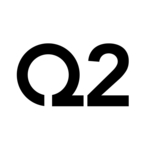Preeminent Report on Climate Change Risk Modeling Released by Catastrophe Resiliency Council and The Lighthill Risk Network
MALVERN, Pa.–(BUSINESS WIRE)–The preeminent report on climate change risk modeling has been released by the Catastrophe Resiliency Council and The Lighthill Risk Network. The report, Best Practices for Modelling the Physical Risks of Climate Change, examines what a warmer world implies for the extreme weather perils that concern insurers, and how catastrophe models can be used to estimate these impacts. It also aims to establish best practices in the use of data, methodologies, and tools for the modeling of climate change risk assessment.
“The risks related to climate change have grown at an accelerated pace in recent years. Establishing best practices in risk modeling methodology related to these risks is imperative,” said Christopher McDaniel, president, Catastrophe Resiliency Council. “Using a common approach will allow the industry to better price climate risk and create resiliency strategies.”
The report addresses four main themes:
- Defining the scope that allows for the right questions to be answered that then show what time horizons and climate scenarios make most sense for (re)insurers to model.
- Reviewing how regulators and supervisors are looking at climate-related financial disclosures.
- Depicting a framework based on future temperature changes that meets the needs of users and regulators.
- Providing examples of best practive for modelling the hazard component of physical risk for all stakeholders.
“Predicting how future climate will influence changes in frequency and severity against different pathways, time horizons and temperature changes has created a lack of consensus as to how best to derive decision useful outputs that could provide all stakeholders with what they need. As the insurance sector plays such a key role in helping bring financial relief to victims of such disasters, fully understanding and modelling the future impacts of climate change requires a holistic view of all approaches to climate change risk modelling,” said Jeremy Hindle, director and consultant – Risk, ESG, Climate, Data Standards & Modelling.
Key findings in the report include:
- The regulatory environment is evolving rapidly with new climate-related financial disclosures and reporting obligations being established. The proposed U.S. SEC enhancement and standardization of climate-related disclosure is a significant change and related financial disclosure reporting could be onerous.
- Extended time horizons chosen by regulators for climate change scenario analysis have little to no value to the non-life insurance industry for pricing, solvency, or risk assumption.
- Small changes in hazards can have big impacts on the footprints of future losses, particulary for rainfall-induced events.
- To fully understand and model climate change, a holistic view of all risks must be taken. It’s not just about climate, exposure, or policy planning / mitigation all viewed independently — it’s all three and in equal measure.
The full report can be accessed here.
About Catastrophe Resiliency Council
The Catastrophe Resiliency Council mission is to collaborate with risk- and insurance-focused parties to create a healthy, competitive risk marketplace that promotes resilience against natural catastrophes. The organization focuses on climate & resilience (research, advocacy and resilience innovation), data (standards, content and interpretation, and industry data), technology (models and analytics, insurtech innovation and technical standards), and operations (industry tools, communication/exchange, and support/education). The Catastrophe Resiliency Council is an affiliate of The Institutes.
About The Institutes
The Institutes are a global not-for-profit comprised of diverse affiliates that educate, elevate, and connect people in the essential disciplines of risk management and insurance. Through products and services offered by The Institutes’ nearly 20 affiliated business units, people and organizations are empowered to help those in need with a focus on understanding, predicting, and preventing losses to create a more resilient world.
About The Lighthill Risk Network
The Lighthill Risk Network is an all-encompassing and inclusive organisation with the specific aim of facilitating and enhancing knowledge transfer into business from academic, government and commercial experts at the forefront of risk-related research. Its members include Aon, MS Amiln, Liberty Syndicates, Guy Carpenter, Lloyd’s and Hiscox.
Contacts
Susan Wisbey-Smith
[email protected]
224-558-2370





































